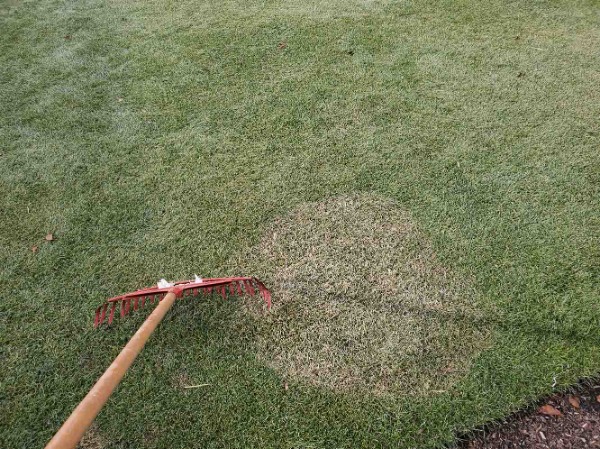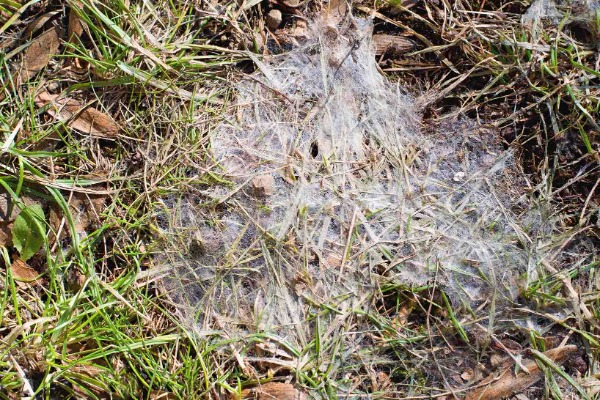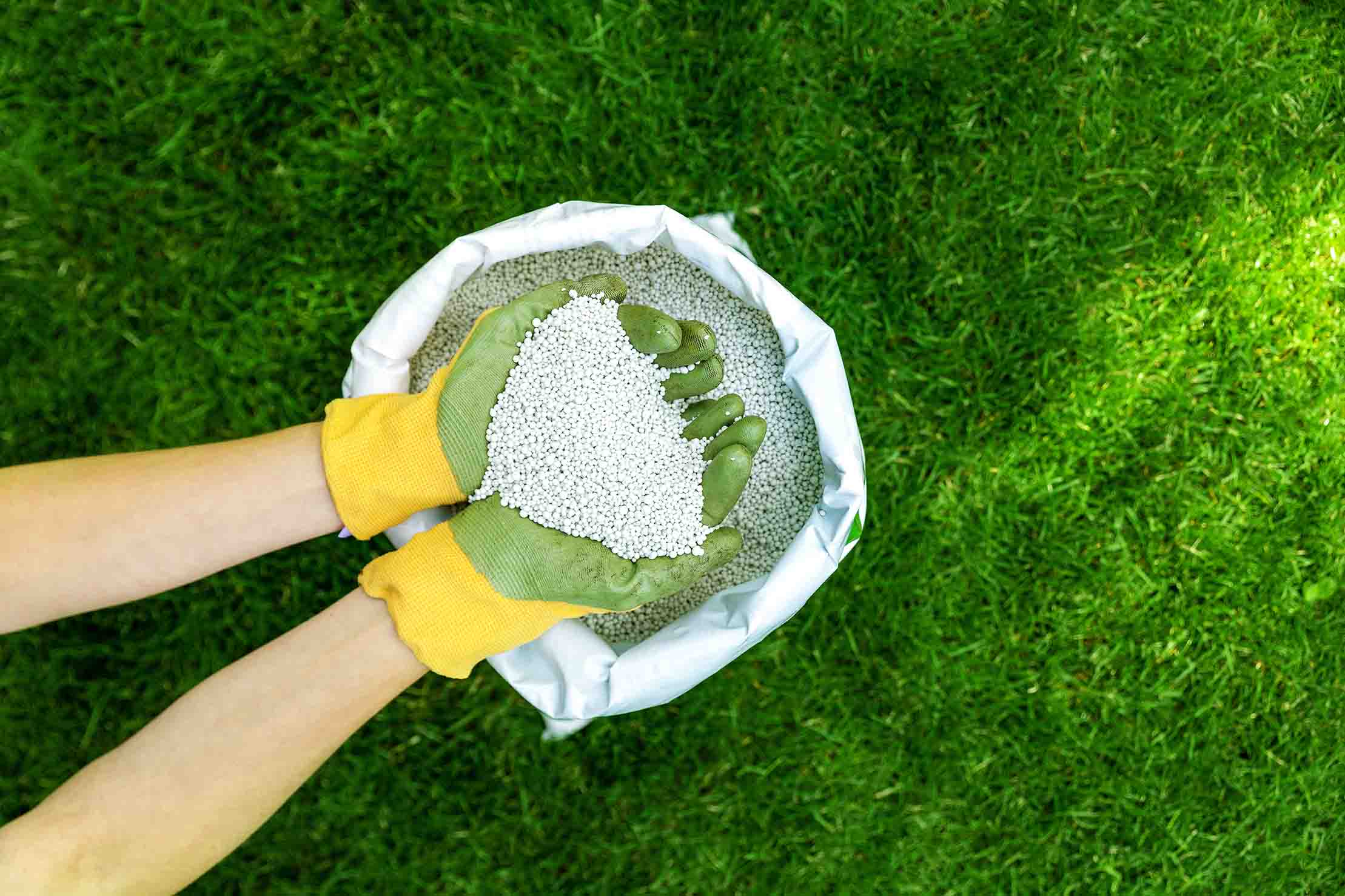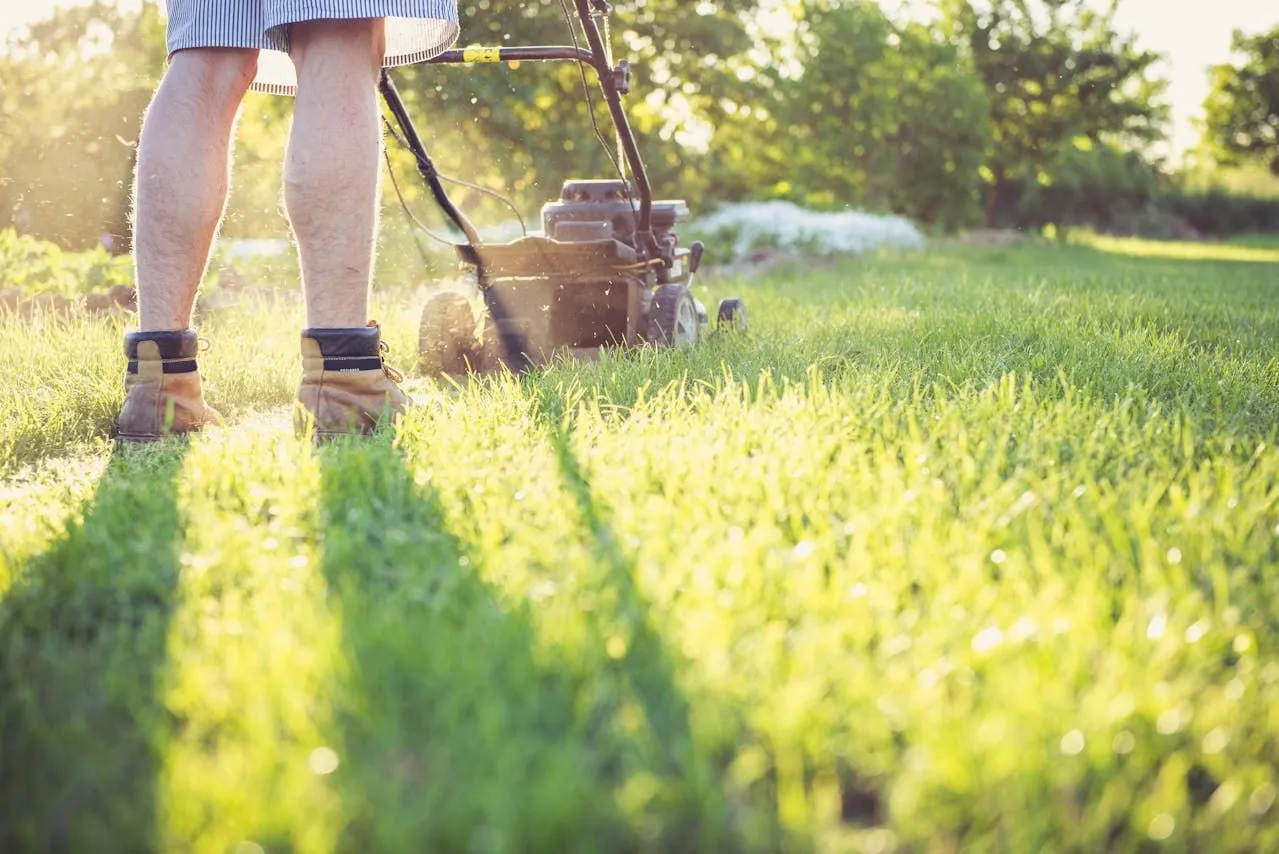Virginia’s cold winters can take a toll on your lawn. Lawn care in early spring must be performed carefully to remedy any winter damage and set your turf up for success through the growing season. Below are our top lawn care tips on how to get your grass growing after winter!

A successful spring revival begins with carefully clearing away everything winter left behind, because early-season debris can suffocate new growth and slow down the lawn’s natural wake-up process. Wet leaves, small branches, and areas of matted turf trap moisture against the soil surface and create ideal conditions for early fungal diseases.
Opening up the lawn with a gentle but thorough cleanup helps sunlight penetrate the canopy, allows airflow to reach weakened blades, and signals to the turf that growing conditions are returning. This single step lays the groundwork for every recovery task that follows.
Focus on removing:

Not all brown or thinning areas share the same cause, and evaluating the source of damage helps you apply the correct fix rather than wasting time with trial-and-error repairs. Winter desiccation dries out blades even in cold conditions, road salt can burn grass near driveways, snow mold leaves pale circular patches, and foot traffic on frozen turf crushes the crown of the plant.
Taking a moment to understand why your lawn looks the way it does ensures your spring work directly targets the issue and prevents recurring problems year after year.

Snow mold can look alarming when it appears after winter, but in most parts of Virginia the damage is superficial and recovers quickly once the lawn receives sunlight and air circulation. Gently lifting matted grass helps release trapped moisture and prevents further fungal development, allowing healthier blades underneath to emerge.
Being too aggressive with raking or scraping can tear tender spring turf and slow recovery, so a light touch is essential. With proper cultural care, snow mold patches usually disappear within a few weeks.

Virginia’s naturally heavy clay soils are especially prone to compaction after winter because freezing and thawing repeatedly squeeze the soil structure tighter. Compaction restricts oxygen movement, slows root reactivation, and delays the lawn’s spring green-up by weeks.
Instead of full aeration, which can be too aggressive in early spring, gentle loosening helps the soil breathe again and prepares it for deeper watering and fertilizer absorption as temperatures warm. This small intervention often leads to noticeably faster recovery in March and April.
Effective ways to loosen compacted soil in spring:

Winter drains key nutrients from Virginia lawns, leaving them pale and slow to respond when spring arrives. Applying a balanced, slow-release fertilizer provides a steady supply of nutrients that supports root health, blade development, and overall turf density.
The goal isn’t to force fast top growth but to rebuild the lawn’s internal reserves so it can withstand fluctuations in temperature and moisture as spring transitions toward summer. A moderate, well-timed feeding produces healthier, more durable turf in the months ahead.

Bald or thinning patches are extremely common after winter, especially in areas exposed to traffic, shade, or poor drainage. These damaged spots rarely fill in on their own and can quickly become entry points for weeds if left untreated.
Addressing them early in spring gives new seedlings time to root deeply and blend seamlessly with surrounding turf before summer heat stresses the lawn again. Proper preparation, high-quality seed, and consistent moisture are the keys to successful patch repair in Virginia’s climate.
Steps for repairing winter-damaged spots:

Mowing plays a more critical role in post-winter recovery than most homeowners realize. Early-season grass is tender and still rebuilding energy, so mowing too short or too early can set the lawn back significantly. Waiting for active growth ensures the blades have reestablished strength, and keeping to proper mowing heights protects the plant’s ability to photosynthesize.
Sharpening the mower blade is equally important, as dull blades shred the grass and create frayed edges that lose moisture quickly, which is an unnecessary stress during the recovery season.
Early spring mowing guidelines:
If you need help getting your grass growing again after winter, Blue Sky is here to help! Our landscapers and lawn care professionals know how to fertilize, mow, and tend to your lawn with the precision and attention to detail that is required immediately after winter. Call us today for a free quote on any of our lawn care services this spring!